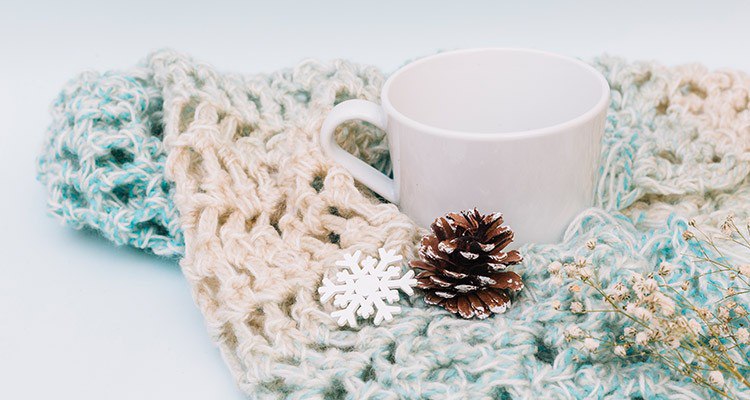This is one of the easiest ways of determining the temperament of a person. Easy though it might seem, the determination of temperaments calls for vigilance and accuracy. In many cases, ordinary people face difficulty in doing the job.
However, these factors are used in Iranian traditional medicine to determine the temperaments: checking the amount of muscle and fat in the body, checking the characteristics of the touched area in the body such as softness and hardness, skin color, hair characteristics, shape and characteristics of organs, way of sleeping and waking up, the quality and characteristics of body excrement and all factors involved in physical movements.
READ MORE:Tips of traditional Iranian medicine and healthy lifestyles for people with different temperaments
1- Check the body’s coldness and warmth
You need to first check the coldness and warmth of the body. Using this technique marks the first step to know if someone’s temperament is warm or cold. Just touch part of the body like a person’s forearm and notice how you feel by so doing.
- If you feel hot, then that person’s temperament is warm.
- If you feel cold, then that person’s temperament is cold.
2- To determine someone’s temperament, see if they have soft or hard body tissue
The next step to determine the type of temperament is to check the degree of softness and hardness of body tissues, muscles and skin. Different people have different body tissues. Thus, accuratelychecking them can help provide more full details to determine the type of their temperaments.
- If you feel warm by touching the body, and in addition to the warmth, you notice that the body tissue is soft and easily sinks in with the slightest pressure of finger, then that person’s temperament is moist and warm at once. This means that he/she has the characteristics of warm and moist temperament.
- If you feel warm by touching the body, but it’s dry and slightly rough under your finger, that person has a dry and warm temperament. This is a sign of warm and dry temperament, which is the feeling of warmth and dryness in the body tissue and in the skin.
- You may have a different experience when you touch that person’s body. If you feel cold by touching the person’s body, but the coldness is accompanied by skin softness and fleshy body, the person is showing signs of cold and moist temperament, which is also called cold and moist temperament by traditional medicine practitioners.
- If a person’s body is cold and hard and also dry, he/she has the characteristics of cold and dry temperament.
3-What color is your skin?
Examining the color of the skin, the body tissue and its coldness and warmth is the third step to determine the type of temperament. Iranian traditional medicine therapists check skin color in addition to body tissue and bone structure to identify the temperament type. They believe that skin color serves as a good sign to check the type of temperament.
- White or whitish skin is a good of a person’s cold temperament. However, this also is a sign of anemia.
- People whose skin is red or reddish have warm temperament. Such people have pinkish and red skin, and in addition to warm temperament, they are also categorized as people with much blood.
- People whose skin is yellow or yellowish have dry temperament in addition to warm temperament. They face problems due to the predominance of bile in their bodies throughout their lives.
- There are signs of cold and dry temperament in people whose skin is dark and dull and whose lips are eggplant-colored. They are also facing the predominance of soda in their bodies.
- Men and women whose skin is white are categorized as people with cold and moist temperament. A key sign of such people is the prevalence of phlegm, which affects their daily life.
4- Are you muscular or bony?
Another criterion that traditional medicine therapists use to identify people’s temperament is to check the appearance and shape of the body and muscles as well as the extent of a person’s muscularity.
- People with a broad body have a warm temperament.
- People with big body parts, outstanding vessels and a strong pulse are also said to have a warm temperament.
- People with thick and big muscles and finer tendons have a warm temperament.
- To the contrary, if a person has small limbs and a small body, this is a sign of coldness.
- Having a weak pulse and delicate muscles are other signs of coldness.
- Traditional medicine practitioners believe people with a thin face whose skin sticks to the bones have a dry temperament.
- Those with noticeable and protruding joints whose larynx and nose cartilage are also outstanding are put in the group of people having a dry temperament.
5- How many hours do you sleep a day?
Another way to determine people’s temperament is to check the time, quality and sleep patterns of each person. Traditional medicine practitioners can identify people’s temperament by examining the quality and quantity of sleep and examining other individual characteristics. From their viewpoint, people who sleep enough throughout the day and people who oversleep have different temperaments.
If you are one of those who sleep more than 8 hours, then you have a cold and moist temperament.
But if you sleep less than 8 hours and you wake up and work most of the day, you have a warm and dry temperament.
6- Check out your hair
To determine the type of someone’s temperament, you need to check their hair and the type and quality of its growth. Thus, you can check the 5th factor that helps determine a person’s temperament. The type of hair and its growth rate are different in people with different temperaments.
- Traditional medicine practitioners believe that people with a high hair growth rate who are in the group of hairy people have a warm temperament.
- But people whose hair growth rate is low and those who complain about this matter are classified as having a cold temperament. These people have sparse hair and eyebrows and they do not have much hair in other parts of their body either.
- If hair growth in a man or woman is very fast so that they feel that their hair is growing faster and longer than normal and if they have other signs, they are categorized as people with a warm and dry temperament. Meanwhile, curly hair is also a sign of warm and dry temperament and should not be overlooked.
- Thinness of hair could also be a sign of coldness and moisture of temperament. Therefore, you should also take this issue into account and it would be better to use the advice of a traditional medicine practitioner because thin hair may be the result of a disease. In addition, having smooth and straight hair is another sign of cold and moist temperament in men and women.
- People with thick hair also have warm and dry temperament and this shows warm temperament in men and women.
- Men and women’s hair color is another indication of temperament. People whose hair color is black usually have a warm and dry temperament.
- People whose hair color tends to be gray and gray strands are seen on their heads earlier than others are also among those with a cold and moist temperament.
7- Defecation: A way to determine temperament
The color of feces and its quality are other factors used by traditional medicine practitioners to determine people’s temperament. For this purpose, examining all body waste including urine, feces, sweat, hair, nails and blood would be useful to accurately identify the type of temperament.
- If feces or urine is darker than normal in color or stinks more than normal, this shows a warm temperament and indicates the predominance of bile in the body.
- Colorless excreta and lack of smell are signs of a cold temperament.
8- How do you adapt to the environment?
If someone adapts to heat, cold, dryness and moisture very quickly, this indicates the dominance of that temperament. For example, if you are exposed to heat or eat food with a warm nature and you feel warm quickly, this indicates you have a warm temperament.
In our next edition, we will give you some practical tips of traditional Iranian medicine for each temperament.




